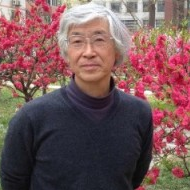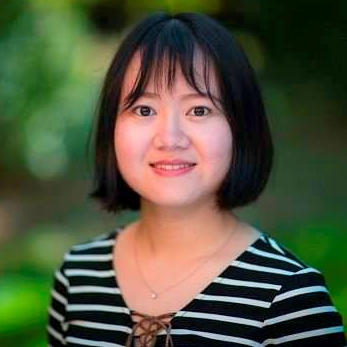Academic Activities at Religious Universities from a Historical Perspective
A special issue of Religions (ISSN 2077-1444).
Deadline for manuscript submissions: closed (31 December 2022) | Viewed by 13482
Special Issue Editors
Interests: graduate education; higher education evaluation; education policy
Special Issues, Collections and Topics in MDPI journals
Interests: Buddhist studies; Christian studies; religious issues in East Asian classical literature.
Interests: Higher education; comparative education; education policy.
Special Issue Information
Dear colleagues,
Religions played an important role in the history of the university. For example, the Christian church was among the earliest founders of the university in Medieval Europe, where modern universities origin (de Ridder-Symoens & Rüegg, 2003, pp. 81-86). On the one hand, the ecclesiastical powers hoped to gain reinforcement and support from the university’s production of scholarly and scientific knowledge in their struggle for existence (de Ridder-Symoens & Rüegg, 2003, p. 14). On the other hand, the university secured its privileges, such as concerning internal jurisdiction, freedom from duties and levies, and habitation, through the utilisation of the dynamic and tension between the church and secular authorities (Zhang & Sun, 2004; Kibre, 1962). The interaction between the university, the church, and secular authorities, laid a foundation for the emergence of modern universities (Altbach, 2001; Courtenay, 1989).
Religious universities that were primarily supported by religious entities gradually appeared and developed across the world, and became important players in higher education academic activities such as student cultivation and research. For example, the church became increasingly influential in many countries outside Europe as a result of the spread of the church with colonial powers (Cox, 2002; Smith, 2014) as well as the enduring efforts of missionaries (Gregg, 1946; Ingleby, 2000; Woodberry, 2007). In this process, church-founded and -supported universities appeared and developed on many countries’ soils (Hayhoe, 2004; Pillay, 2015). These universities in turn supported and sustained the existence of the church, by, for example, the cultivation of seminary students (Hillman, 2006; Williamson & Sandage, 2009) and biblical studies (Clines, Fowl, & Porter; 1990; Legaspi & Michaelis, 2010).
However, despite the long tradition, it is yet ambiguous how universities supported by religious powers interacted with the religious entities historically, how these universities conducted their academic activities including student cultivation and research from a historical perspective, did the operation of the universities change historically especially against the backdrop of the continuing secularization (Chaves, 1994; Warner, 2013) and marketisation (Carrette & King, 2005; Gauthier & Martikainen, 2018), did the operation of these universities vary across countries in history, and so forth.
In this special issue of Religions, we invite authors to contribute articles that debate these and other questions related to the conduct of academic activities and operation at religious universities in history. We are interested in papers that contribute to the discussion from a historical perspective, offer thoughtful theoretical arguments, draw on historical evidence. We particularly welcome contributions from different regions of the world.
Specifically, we invite research contributions to discuss the following issues, albeit not in a strict (exclusive) sense: a historical examination of the operation and conduct of academic activities at religious universitis, including cultivation and development of students, curricula design and research, and so forth.
References
Alexander, F.K. (1998). The decline and fall of the wall of separation between church and state and its consequences for the funding of public and private institutions of higher education. University of Florida Journal of Law & Public Policy, 10, 103–128.
Altbach, P.G. (2001). Academic freedom: international realities and challenges. Higher education, 41(1–2), 205–219.
Carrette, J. and King, R. (2005). Selling spirituality: the silent takeover of religion. Abingdon: Routledge.
Chaves, M. (1994). Secularization as declining religious authority. Social forces, 72(3), 749–774.
Clines, D.J., Fowl, S.E., and Porter, S.E. (Eds.). (1990). The Bible in three dimensions: essays in celebration of forty years of biblical studies in the University of Sheffield (Vol. 87). London: A&C Black.
Courtenay, W.J. (1989). Inquiry and inquisition: academic freedom in medieval universities. Church History, 58(2), 168–181.
Cox, J. (2002). Imperial fault lines: Christianity and colonial power in India, 1818-1940. Stanford: Stanford University Press.
de Ridder-Symoens, H. and Rüegg, W. (Eds.). (2003). A history of the university in Europe: Universities in the Middle Ages (Vol. 1). Cambridge: Cambridge University Press.
Drummond, R.H. (1971). A History of Christianity in Japan. Grand Rapids: Eerdmans.
Gauthier, F. and Martikainen, T. (2018). Introduction: the marketization of religion. Religion, 48(3), 361–366.
Gregg, A.H. (1946). China and the educational autonomy: the changing role of the protestant educational missionary in China 1807-1937. New York: Syracuse University Press.
Gressy, E.H. (1928). Christian higher education in China: a study for the year 1925-1926. Shanghai: China Christian Educational Association.
Hayhoe, R. (2004). China’s universities, 1895-1995: a century of cultural conflict (Vol. 997). London: Garland Publishing.
Hillman, G.M. (2006). Leadership practices and current ministry experience of masters-level seminary students. Christian Higher Education, 5(2), 141–159.
Ingleby, J.C. (2000). Missionaries, education and India. Delhi: ISPCK.
Kibre, P. (1962). Scholarly privileges in the Middle Ages: the rights, privileges, and immunities of scholars and universities at Bologna, Padua, Paris, and Oxford (Vol. 72). Medieval Academy of America.
Kliever, L.D. (1987). Academic Freedom and Church-Affiliated Universities. Texas Law Review, 66, 1477–1480.
McConnell, M.W. (1990). Academic Freedom in Religous Colleges and Universities. Law & Contemporary Problems, 53, 303–324.
Pillay, G.J. (2015). “Higher” Education: A Perspective from a Christian University Foundation in Contemporary England. Christian Higher Education, 14(1–2), 4–16.
Sloan, D. (1994). Faith and Knowledge: Mainline Protestantism and American Higher Education. Louisville, KY: Westminster John Knox Press.
Smith, B.H. (2014). The church and politics in Chile: challenges to modern Catholicism. Princeton: Princeton University Press.
Warner, R. (2013). Re-imagining a Christian university in a secular age. Journal of Beliefs & Values, 34(3), 347–358.
Williamson, I.T. and Sandage, S.J. (2009). Longitudinal analyses of religious and spiritual development among seminary students. Mental Health, Religion & Culture, 12(8), 787–801.
Woodberry, R.D. (2007). The social impact of missionary higher education. In: Philip Yuen Sang Leung and Peter Tze Ming Ng (Eds.). Christian Responses to Asian Challenges: A Globalization View on Christian Higher Education in East Asia. Hong Kong: Chinese University Press, 99–120.
Zhang, B. and Sun, Y. (2004). Privileges of medieval universities in Western Europe (Xiou zhongshiji daxue de tequan). Journal of Beijing Normal University (Social Sciences) (Beijing Shifan Daxue Xuebao, Shehui Kexueban). 4, 16–23.
Dr. Chuanyi Wang
Prof. Komine Kazuaki
Dr. Lili Yang
Dr. Yang Gao
Guest Editors
Manuscript Submission Information
Manuscripts should be submitted online at www.mdpi.com by registering and logging in to this website. Once you are registered, click here to go to the submission form. Manuscripts can be submitted until the deadline. All submissions that pass pre-check are peer-reviewed. Accepted papers will be published continuously in the journal (as soon as accepted) and will be listed together on the special issue website. Research articles, review articles as well as short communications are invited. For planned papers, a title and short abstract (about 250 words) can be sent to the Editorial Office for assessment.
Submitted manuscripts should not have been published previously, nor be under consideration for publication elsewhere (except conference proceedings papers). All manuscripts are thoroughly refereed through a double-blind peer-review process. A guide for authors and other relevant information for submission of manuscripts is available on the Instructions for Authors page. Religions is an international peer-reviewed open access monthly journal published by MDPI.
Please visit the Instructions for Authors page before submitting a manuscript. The Article Processing Charge (APC) for publication in this open access journal is 1800 CHF (Swiss Francs). Submitted papers should be well formatted and use good English. Authors may use MDPI's English editing service prior to publication or during author revisions.
Keywords
- religious university
- higher education
- religion
- governance
- academic activitites
Benefits of Publishing in a Special Issue
- Ease of navigation: Grouping papers by topic helps scholars navigate broad scope journals more efficiently.
- Greater discoverability: Special Issues support the reach and impact of scientific research. Articles in Special Issues are more discoverable and cited more frequently.
- Expansion of research network: Special Issues facilitate connections among authors, fostering scientific collaborations.
- External promotion: Articles in Special Issues are often promoted through the journal's social media, increasing their visibility.
- Reprint: MDPI Books provides the opportunity to republish successful Special Issues in book format, both online and in print.
Further information on MDPI's Special Issue policies can be found here.








